TouchPoint HMI
The tech behind the touch
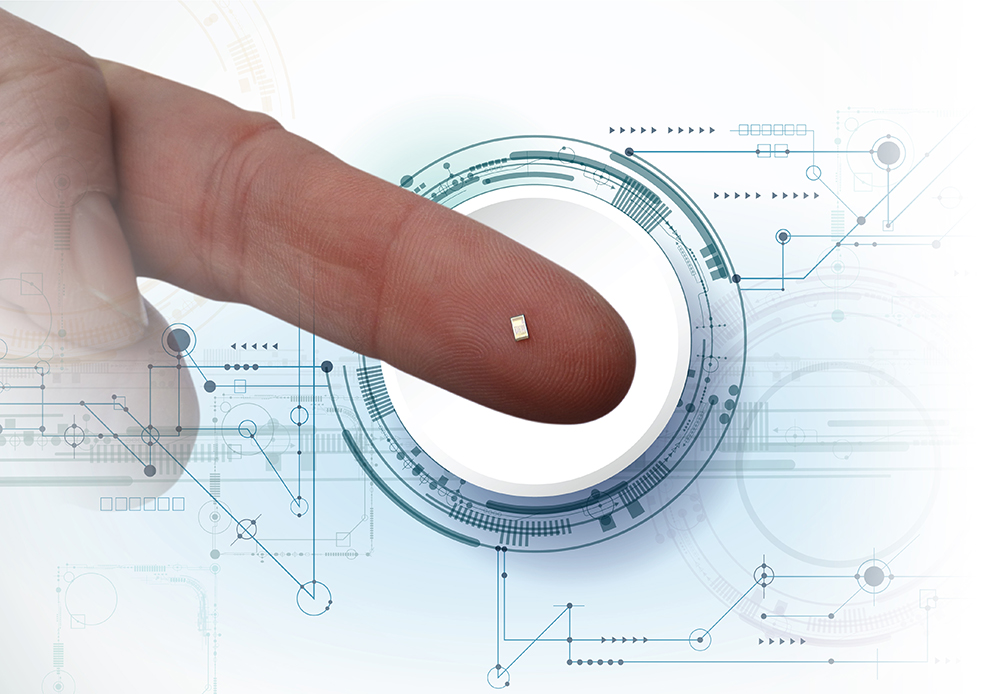
TouchPoint chips power SmartSurface touch interfaces with accuracy and control
UltraSense TouchPoint HMI Controllers fully integrate multi-mode touch sensing, lighting control, and algorithm processing in a single chip – powering a new generation of Human-Machine Interfaces
Fully Integrated Sensor Systems on a Chip
TouchPoint products use a combination of capacitive, ultrasound, and force-sensing technology for a variety of applications
UltraSense TouchPoint C
CapForce HMI Controller
Capacitive + Force integrated System on a Chip (SoC) controller including Analog Front End (AFE)
- Drives and senses single channel Self-Cap capacitive electrode
- Integrated patented QuadForce piezoelectric 4-strain sensor architecture
- Minimum detectable Strain: 0.8uS (microstrain)
- Sensitivity: 25LSB/uS, or 20mV/uS
- Pulse Width Modulator (PWM) control for LED backlighting of icon
- Direct communication with haptic controller for no-latency tactile feedback
- Senses through typical plastic and glass materials up to 5 mm in thickness
- AEC Q100 Grade 2 Qualied (Operating range: -40°C to 105°C)
- 3 mm x 3 mm x 0.6 mm QFN package
CapForce
UltraSense TouchPoint Q
TapForce™ HMI Controller “Force Sensor”
Piezoelectric Force sensing integrated SoC controller including AFE
- Augments existing capacitive systems with force sensing
- One controller senses multiple buttons depending upon system mechanical design
- Mounting substrate can be by traditional PCB or flexible printed flims
- Integrates QuadForce piezoelectric 4-strain sensor architecture
- Minimum detectable Strain: 0.8uS (microstrain)
- Sensitivity: 25LSB/uS, or 20mV/uS
- AEC-Q100 Grade 2 Qualified (Operating range: -40°C to 105°C)
- 3 mm x 3 mm x 0.6 mm QFN pkg (In-Plane) or 2.6 mm x 1.4 mm x 0.5 mm (Z-Pillar)
TapForce
UltraSense TouchPoint Z
UltraForce™ HMI Controller
Ultrasound + Force integrated SoC controller including AFE
- For Touch on Metal applications
- Transmits and receives ultrasound beam through material stacks using an array of Piezoelectric Micromachined Ultrasound Transducers (PMUTs)
- Senses through conductive surface materials (e.g. metals) that capacitive technology cannot
- Detection up to 5mm thickness depending on metal materials
- Integrates patented QuadForce piezoelectric 4-strain sensor architecture
- Minimum detectable Strain: 0.8uS (microstrain)
- Sensitivity: 25LSB/uS, or 20mV/uS
- PWM control for LED backlighting of icon
- Direct communication with haptic controller for no-latency tactile feedback
- AEC-Q100 Grade 2 Qualified (Operating range: -40°C to 105°C)
- 2.6 mm x 1.4 mm x 0.5 mm optical LGA package
UltraForce
A single SmartSurface HMI controller to replace a cluster of mechanical buttons
TouchPoint Edge can be combined with multiple transducers for multi-mode InPlane Sensing
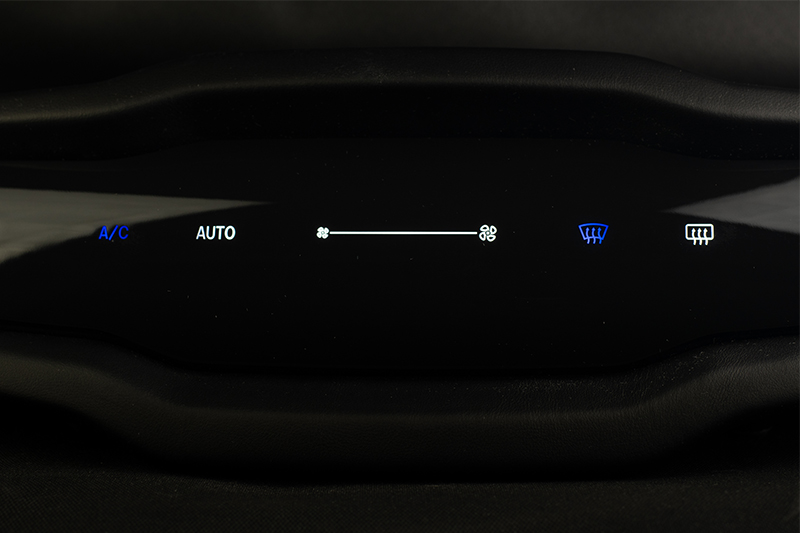
UltraSense TouchPoint Edge
HMI Controller for Multiple Buttons
Centralized SoC integrating 16-channels of touch sensing, MCU, AFE and Neural Touch Engine
- 24-channel (up to) capacitive touch sensing
- 8-channel ultrasound touch sensing
- 8-channel piezo-force sensing
- Auxiliary sensor sensing engine
- Strain Gauge readout AFE
- IR/photodiode readout AFE
- Embedded MCU with propriety sensor-fusion algorithms
- Multiple I/O protocol: I2C Master, I2C slave, UART, LIN, SPI
- 10 GPIOs with PWM capability
- To be used with TouchPoint P (UltraForce) & TouchPoint S (TapForce) transducers
- Operating range: -40°C to 105°C
- 7 mm x 7 mm x 0.6mm QFN package
UltraSense TouchPoint P
UltraForce Transducer
Piezoelectric Ultrasound + Strain sensing transducer
- Operating range: -40C°C to 105°C
- 2.6 mm x 1.4 mm x 0.5 mm LGA package
UltraSense TouchPoint S
TapForce Transducer
Strain-sensing transducer
- Operating range: -40°C to 105°C
- 2.6 mm x 1.4 mm x 0.5 mm LGA package
UltraSense TouchPoint Edge
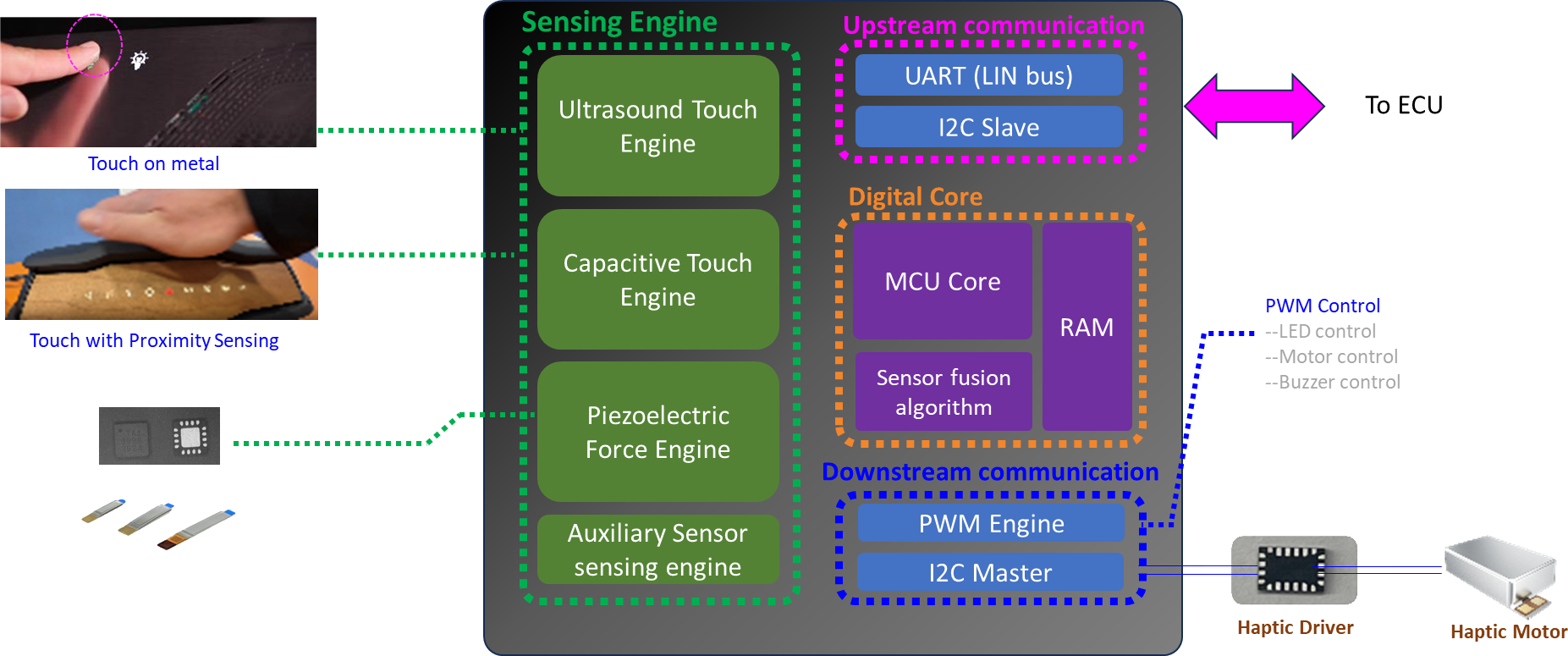
UltraSense TouchPoint Edge
Sensing Engine
Ultrasound Touch Engine
Ultrasound Touch Engine
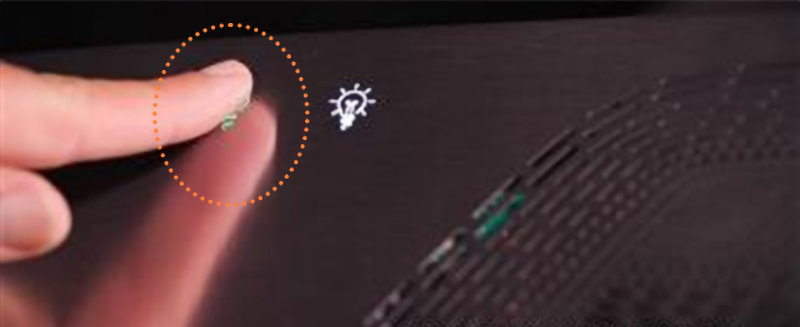
Touch on metal
Capacitive Touch Engine
Capacitive Touch Engine
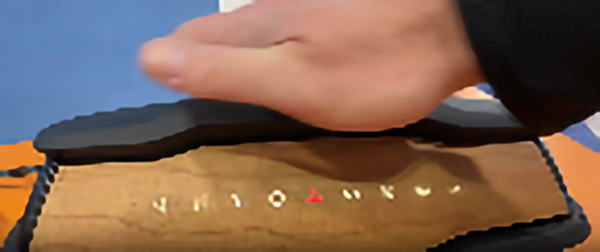
Touch with Proximity Sensing
Piezoelectric Force Engine
Piezoelectric Force Engine
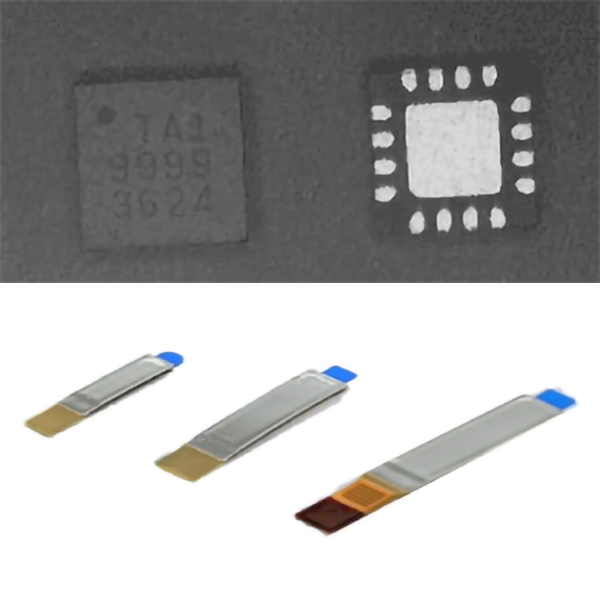
Force Sensing
Superior performance under large manufacturing tolerance
Auxiliary Sensor sensing engine
Upstream Communication
UART (LIN bus)
I2C Slave
Upstream Communication
To ECU
Digital Core
MCU Core
Sensor fusion algorithm
RAM
Downstream Communication
PWM Engine
I2C Master
Downstream Communication
PWM Control
- LED control
- Motor control
- Buzzer control

Customization and Control for OEMs and Tier‑Suppliers
Self-tuning & Configurability
AI / Machine Learning algorithms learn intended versus accidental touch and eliminate edge cases
Firmware supports local processing, low power, and configurable frame rate
Feedback Controls & Customization
Easy-to-use UltraStudio 2.0 software allows custom tuning of lighting, audio, and haptics